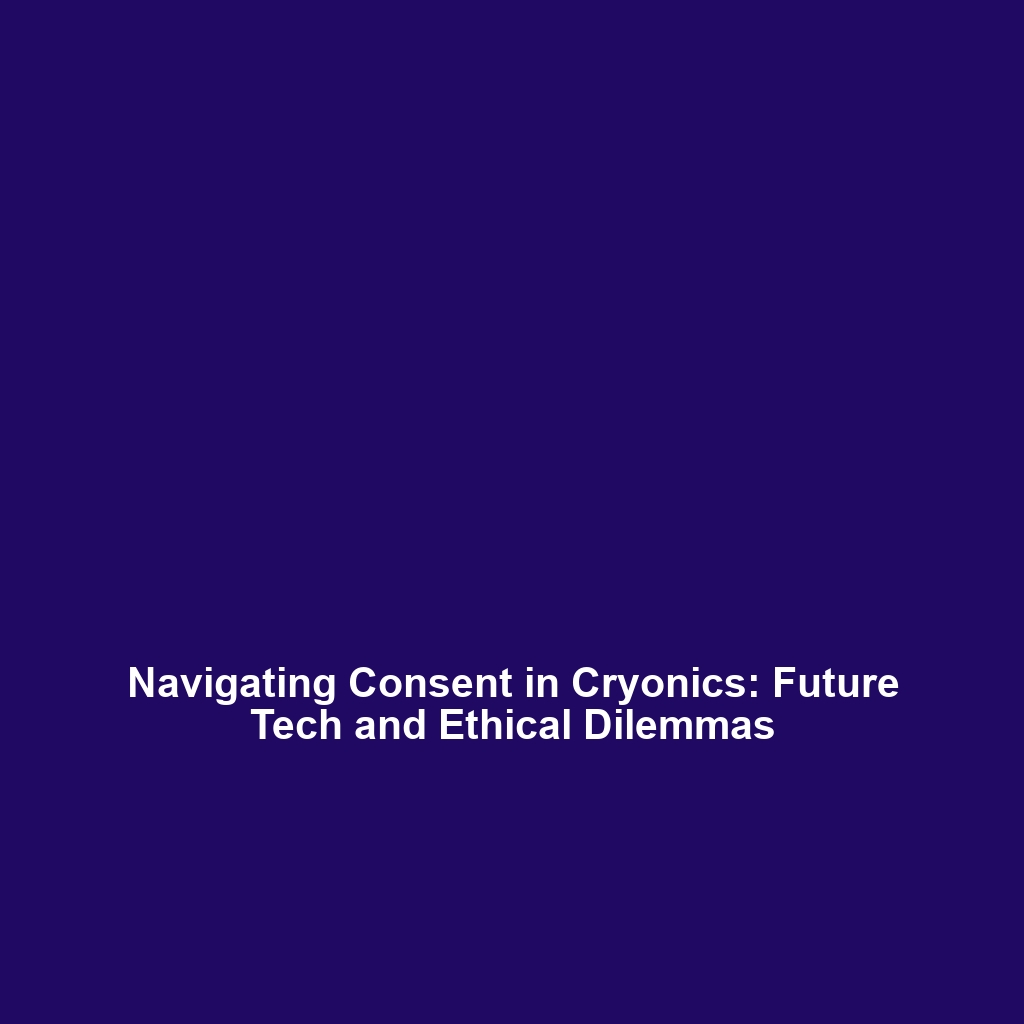Consent in Cryonics: What Happens When Technology Evolves?
Cryonics, the practice of preserving individuals at extremely low temperatures with the hope of future revival, raises profound questions about consent, especially as technology advances. Many cryonics advocates willingly sign up for this procedure while still healthy, trusting that future innovations will facilitate their revival. However, what occurs if the technology they believe in evolves in unforeseen ways? This question is pivotal within the realm of Cryonics & Life Extension and merits thorough exploration.
Key Concepts
The concept of consent in cryonics intertwines legal, ethical, and medical dimensions. When individuals opt for cryonic preservation, they are often making decisions based on current knowledge and technology, which can drastically change over time. Key concepts associated with this include:
- Informed Consent: Understanding the implications and risks associated with cryonics.
- Technological Evolution: Anticipating advancements that may alter preservation methods.
- Ethical Considerations: Evaluating the morality of preservation versus natural mortality.
Applications and Real-World Uses
Understanding how consent functions within cryonics is essential to recognizing its potential applications in the field of Cryonics & Life Extension. Examples include:
- Pre-Preservation Decisions: Individuals making informed choices about cryonics while in good health.
- Policy Formation: The establishment of ethical guidelines for evolving cryonic practices.
- Healthcare Interactions: How medical professionals communicate options for patients considering cryonics.
Current Challenges
The study and implementation of consent in cryonics face several challenges and limitations, including:
- Regulatory Issues: Lack of standard regulations governing cryonics practices and their ethical implications.
- Public Perception: Misconceptions about cryonics leading to decreased interest and participation.
- Dependency on Uncertain Technology: The reliance on future advancements that are not guaranteed to occur.
Future Research and Innovations
As research progresses, the landscape of cryonics and the concept of consent are likely to change dramatically. Future innovations could include:
- Next-Generation Preservation Techniques: Enhanced methods that improve the efficacy and safety of cryopreservation.
- Artificial Intelligence: Utilizing AI to predict outcomes and refine consent processes based on emerging technologies.
- Biotechnology Breakthroughs: Advances that may offer new insights into cellular preservation and revival.
Conclusion
Understanding the concept of consent in the context of cryonics and its relation to the evolution of technology is crucial for both advocates and potential participants. As future innovations unfold, the implications for personal choice and ethical standards will remain central to the discourse on Cryonics & Life Extension. For those interested in exploring this fascinating intersection further, consider looking into topics such as cryopreservation processes, ethical guidelines in medical technology, and the role of consent in advanced healthcare decisions.
For more insights on related topics, check out our articles on Cryonics Overview and Life Extension Strategies.

Leave a Reply